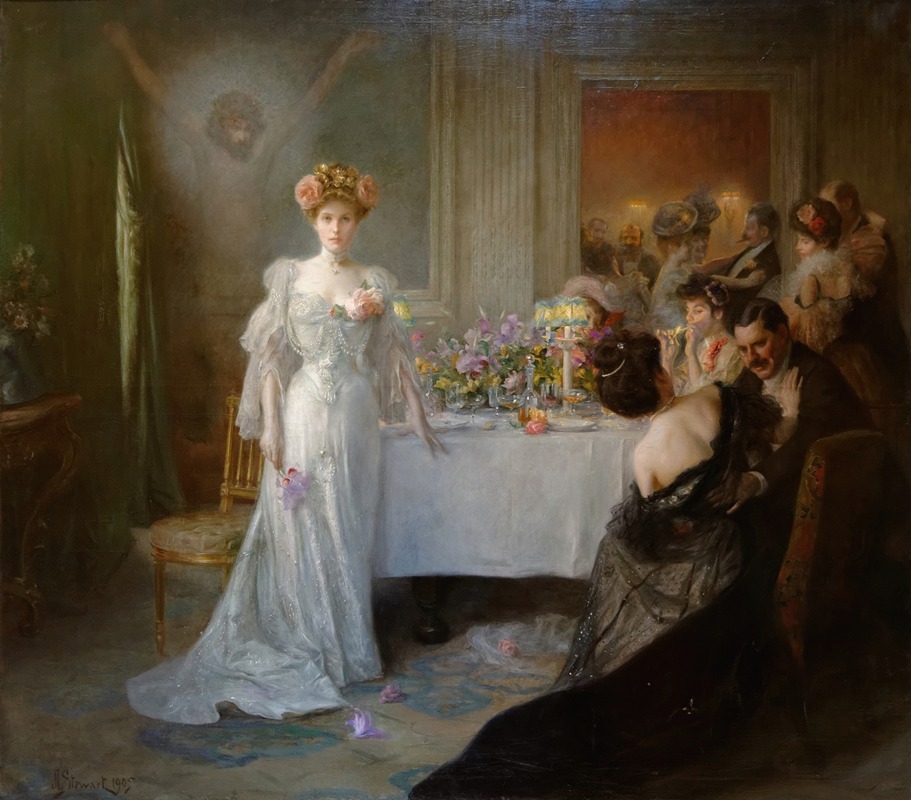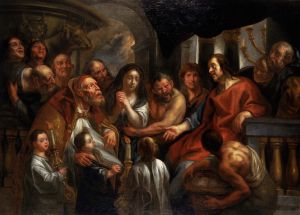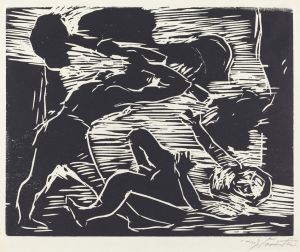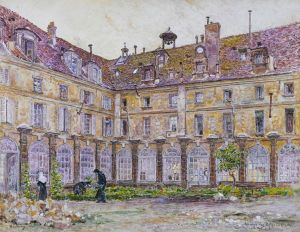
Rédemption
A hand-painted replica of Julius Leblanc Stewart’s masterpiece Rédemption, meticulously crafted by professional artists to capture the true essence of the original. Each piece is created with museum-quality canvas and rare mineral pigments, carefully painted by experienced artists with delicate brushstrokes and rich, layered colors to perfectly recreate the texture of the original artwork. Unlike machine-printed reproductions, this hand-painted version brings the painting to life, infused with the artist’s emotions and skill in every stroke. Whether for personal collection or home decoration, it instantly elevates the artistic atmosphere of any space.
Julius LeBlanc Stewart, an American artist known for his luxurious and detailed depictions of the Belle Époque society, painted "Rédemption" in 1895. Stewart was born in Philadelphia in 1855 and later moved to Paris, where he became a prominent figure in the art scene. His works often portrayed the opulent lifestyle of the elite, capturing the elegance and sophistication of the period.
"Rédemption" is one of Stewart's notable works, showcasing his skill in rendering complex compositions and his keen eye for detail. The painting is characterized by its intricate depiction of figures and the use of light and shadow to create depth and drama. Stewart's ability to capture the nuances of fabric, texture, and expression is evident in this work, as in many of his other paintings.
The painting reflects Stewart's interest in religious and allegorical themes, which he explored alongside his more secular subjects. "Rédemption" can be seen as an exploration of spiritual themes, possibly reflecting the artist's own contemplations on morality and redemption. The composition and the arrangement of figures suggest a narrative that invites viewers to interpret the scene through their own perspectives.
Stewart's technique in "Rédemption" demonstrates his academic training and his exposure to the works of European masters. He studied under Jean-Léon Gérôme, a leading figure in the Academic art movement, which influenced his approach to composition and detail. Stewart's works are often compared to those of his contemporaries, such as John Singer Sargent and James Tissot, who also captured the essence of their era through portraiture and genre scenes.
Throughout his career, Stewart exhibited regularly at the Paris Salon, where his works were well-received by critics and the public alike. His ability to blend realism with a sense of theatricality made his paintings stand out, earning him a reputation as a master of genre painting. "Rédemption" is a testament to his artistic prowess and his ability to convey complex themes through visual storytelling.
Stewart's works, including "Rédemption," are held in various collections and continue to be studied for their artistic and historical significance. His paintings offer a window into the social dynamics and cultural milieu of the late 19th and early 20th centuries, providing valuable insights into the period's art and society.
In summary, "Rédemption" by Julius LeBlanc Stewart is a significant work that exemplifies the artist's skill in capturing the essence of the Belle Époque through detailed and thoughtful compositions. The painting's exploration of allegorical themes adds depth to its visual appeal, making it a noteworthy piece in Stewart's oeuvre.


















